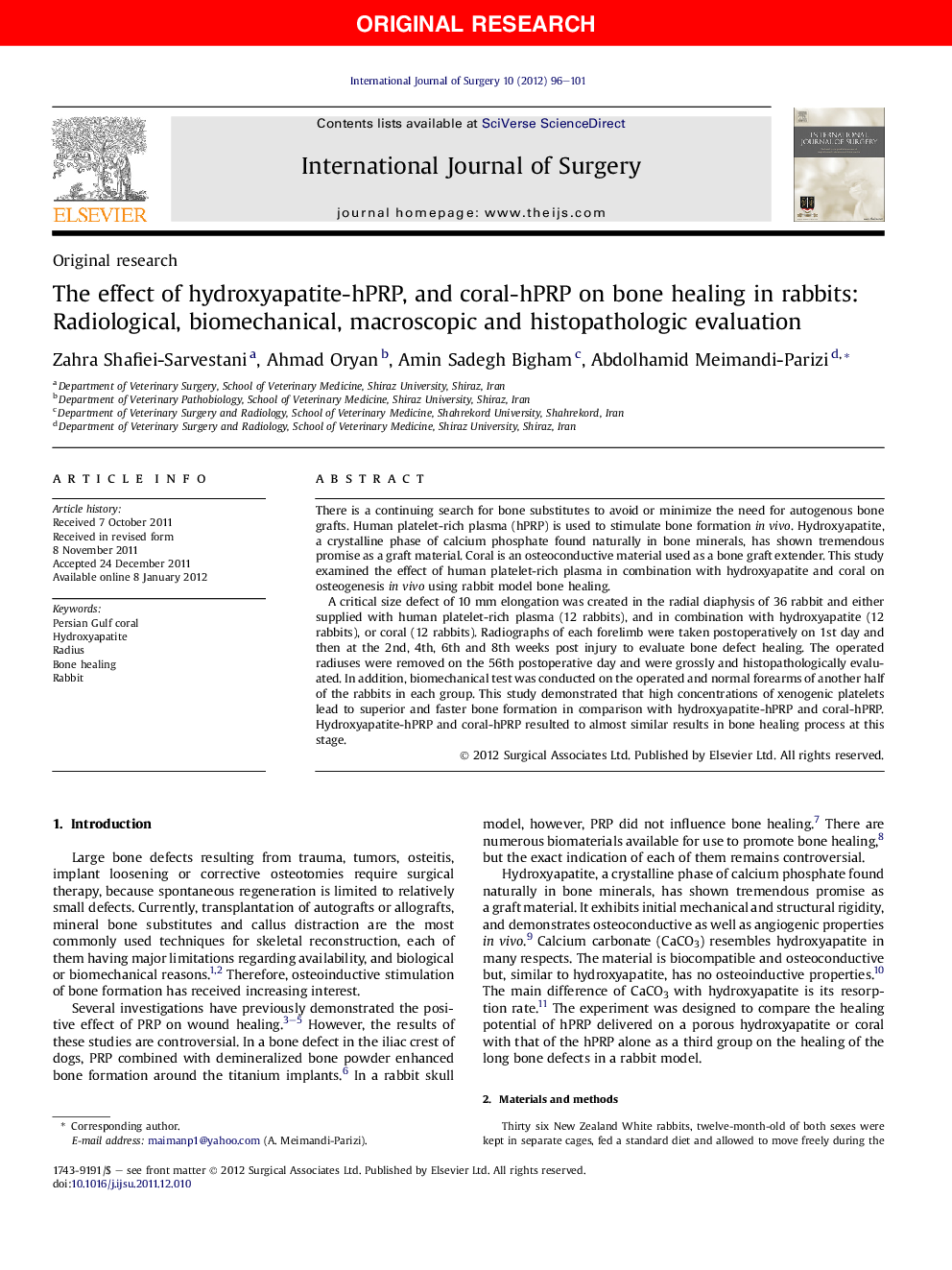| Article ID | Journal | Published Year | Pages | File Type |
|---|---|---|---|---|
| 4287280 | International Journal of Surgery | 2012 | 6 Pages |
There is a continuing search for bone substitutes to avoid or minimize the need for autogenous bone grafts. Human platelet-rich plasma (hPRP) is used to stimulate bone formation in vivo. Hydroxyapatite, a crystalline phase of calcium phosphate found naturally in bone minerals, has shown tremendous promise as a graft material. Coral is an osteoconductive material used as a bone graft extender. This study examined the effect of human platelet-rich plasma in combination with hydroxyapatite and coral on osteogenesis in vivo using rabbit model bone healing.A critical size defect of 10 mm elongation was created in the radial diaphysis of 36 rabbit and either supplied with human platelet-rich plasma (12 rabbits), and in combination with hydroxyapatite (12 rabbits), or coral (12 rabbits). Radiographs of each forelimb were taken postoperatively on 1st day and then at the 2nd, 4th, 6th and 8th weeks post injury to evaluate bone defect healing. The operated radiuses were removed on the 56th postoperative day and were grossly and histopathologically evaluated. In addition, biomechanical test was conducted on the operated and normal forearms of another half of the rabbits in each group. This study demonstrated that high concentrations of xenogenic platelets lead to superior and faster bone formation in comparison with hydroxyapatite-hPRP and coral-hPRP. Hydroxyapatite-hPRP and coral-hPRP resulted to almost similar results in bone healing process at this stage.
